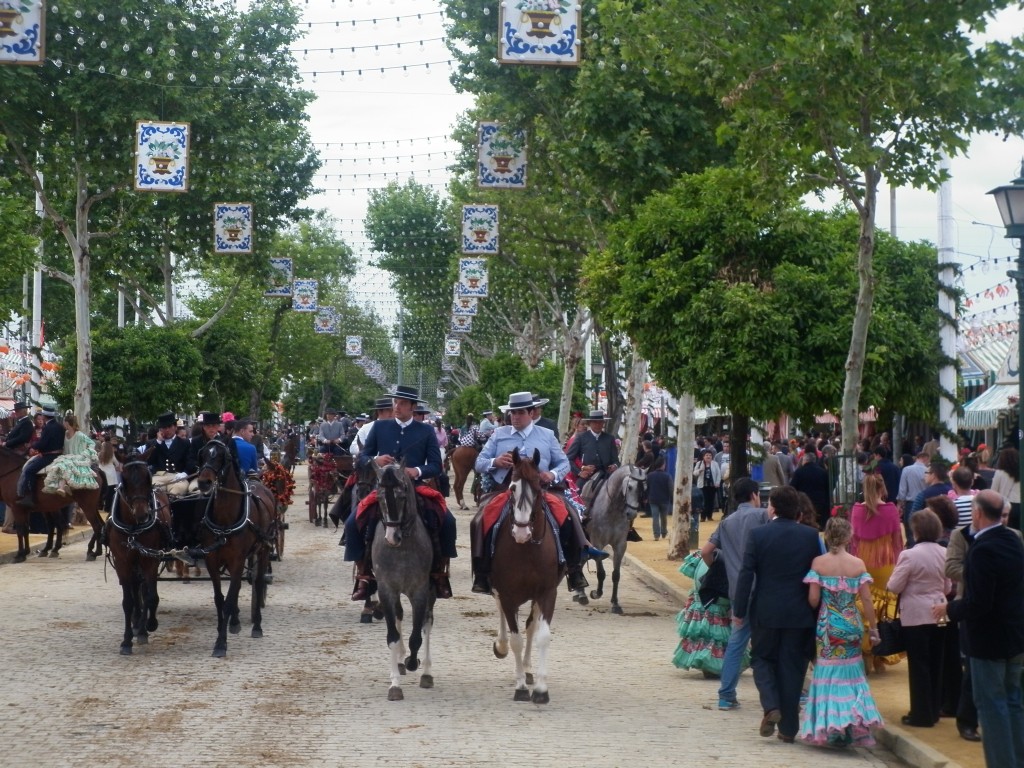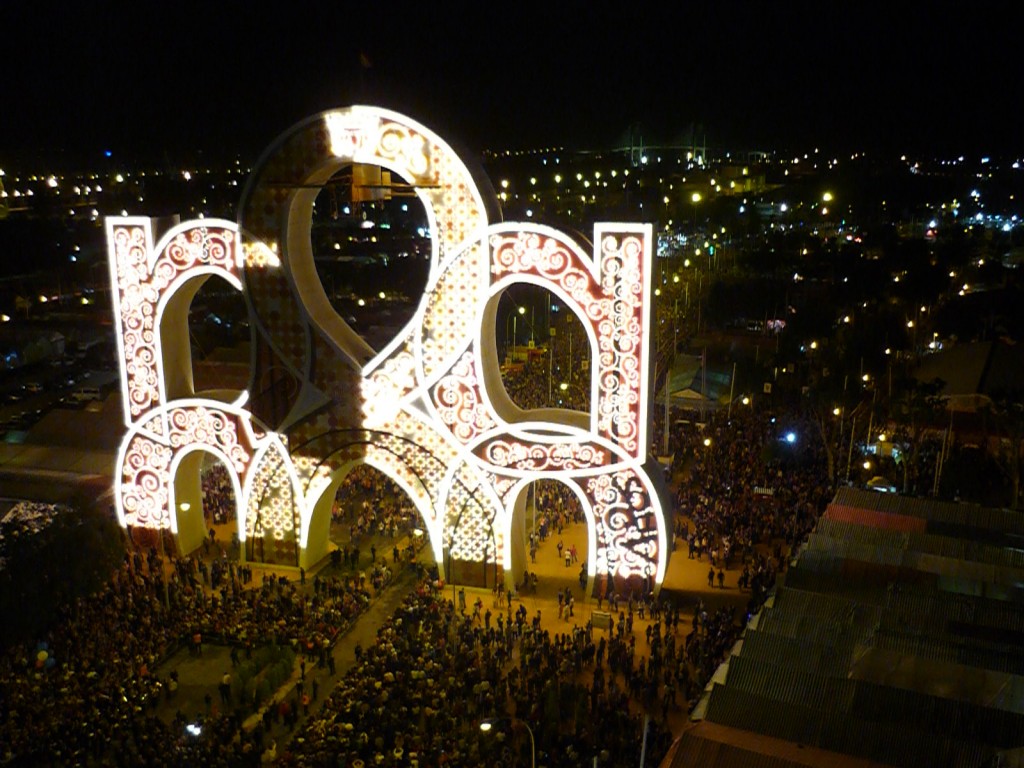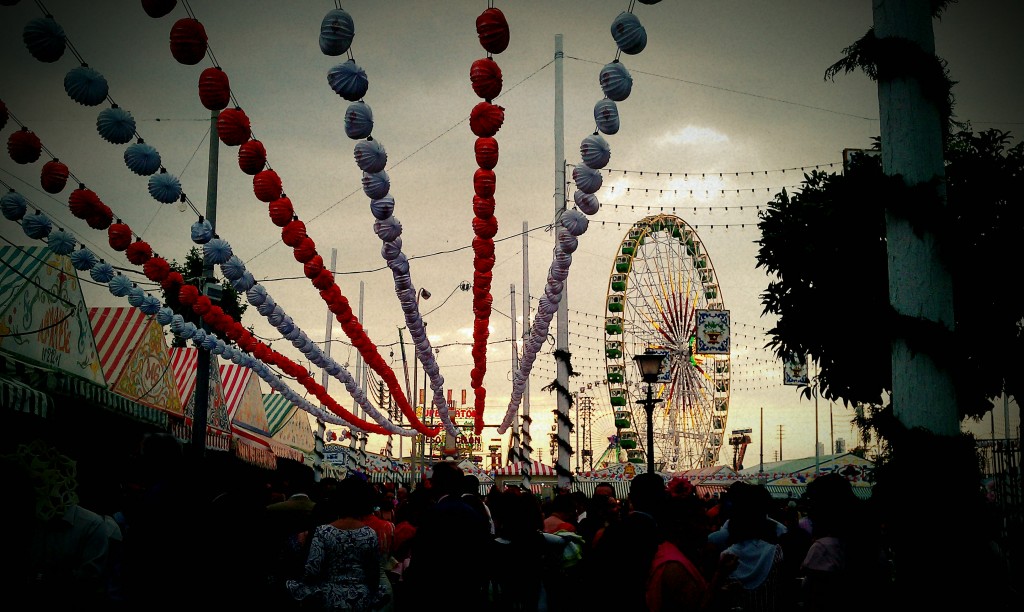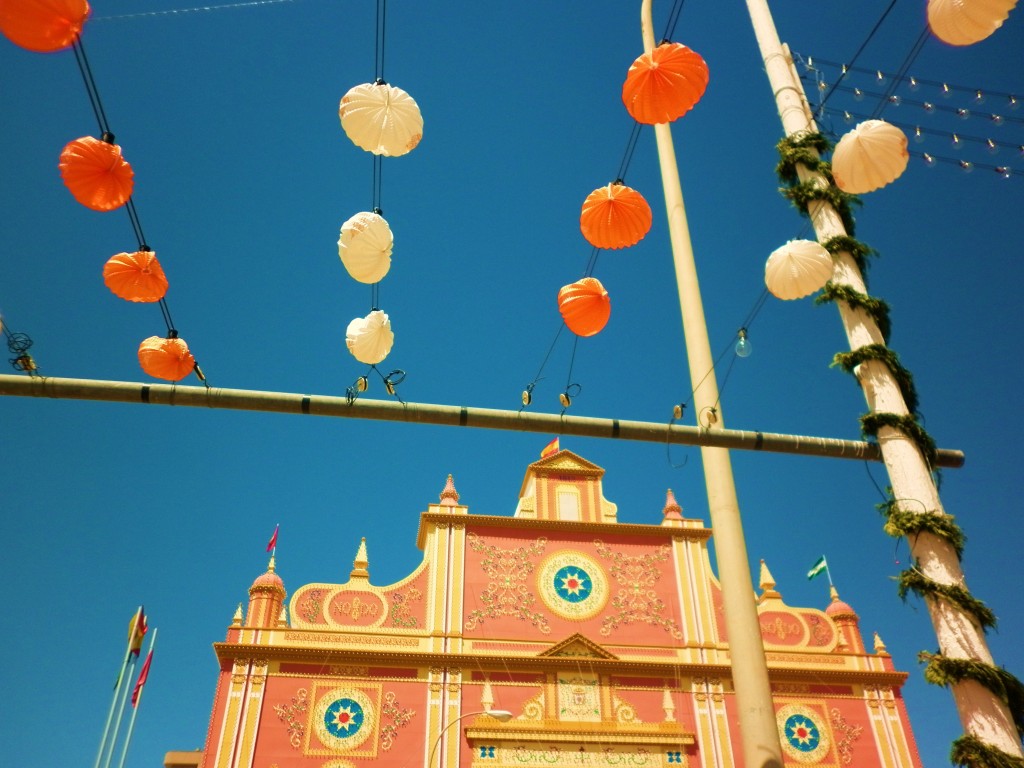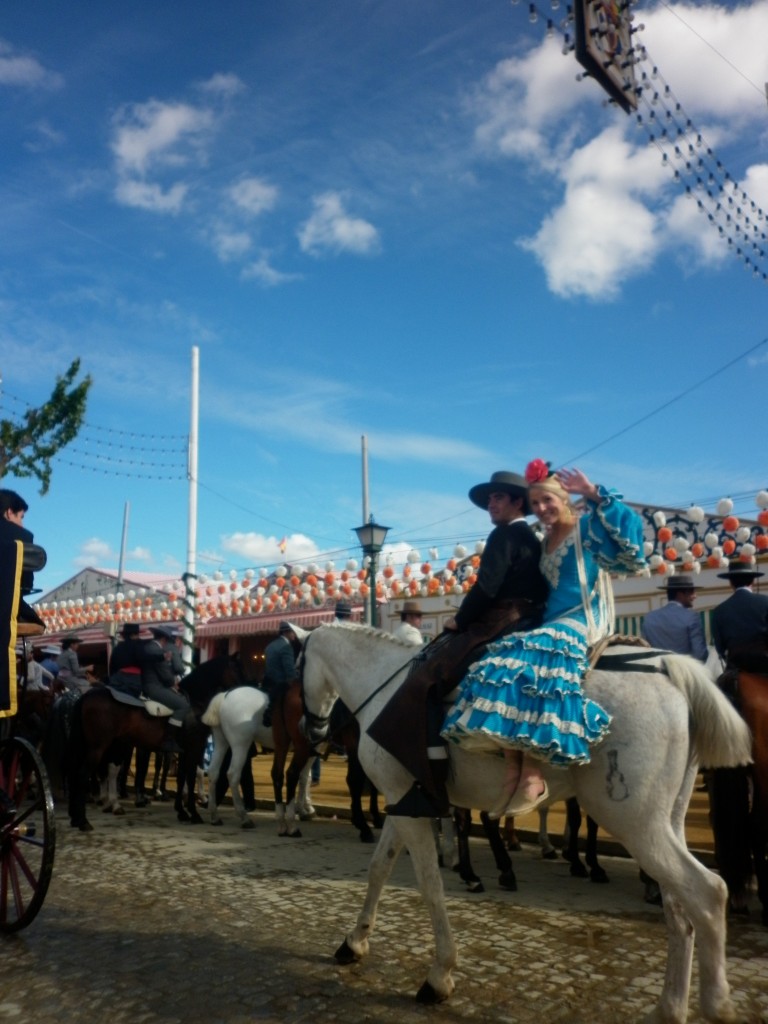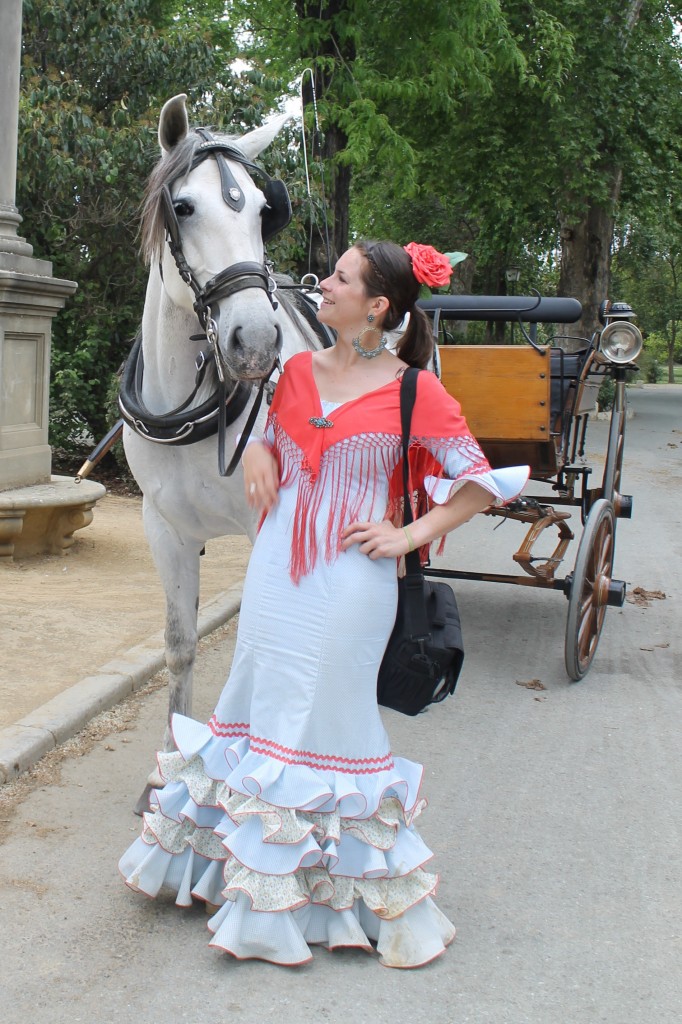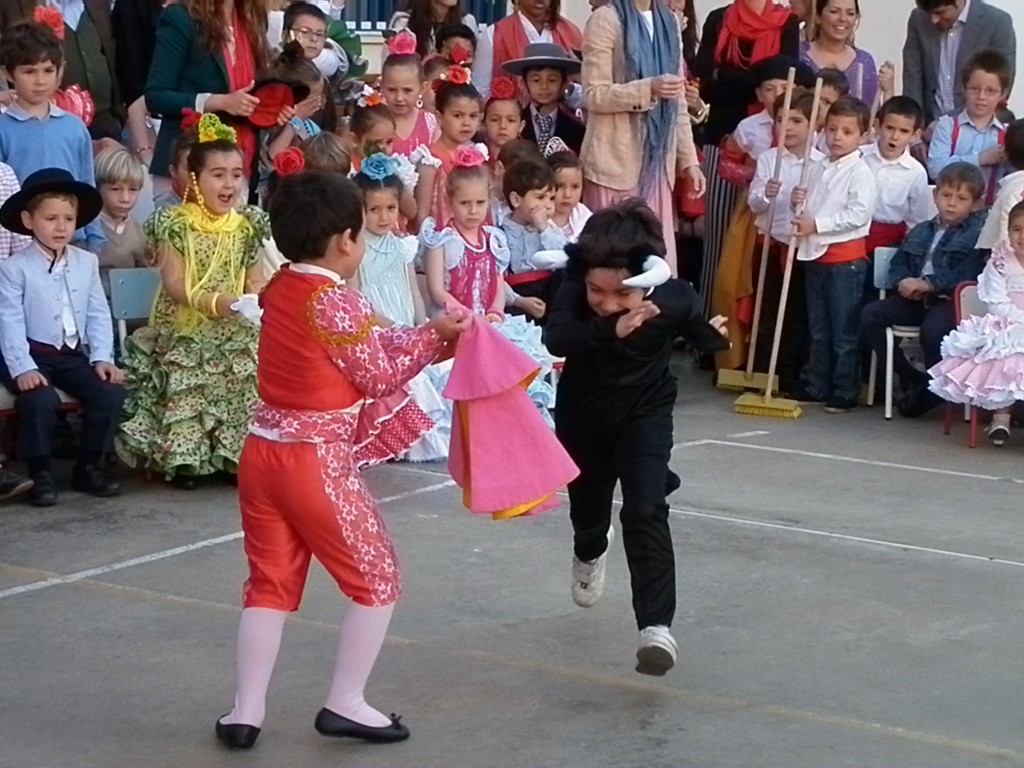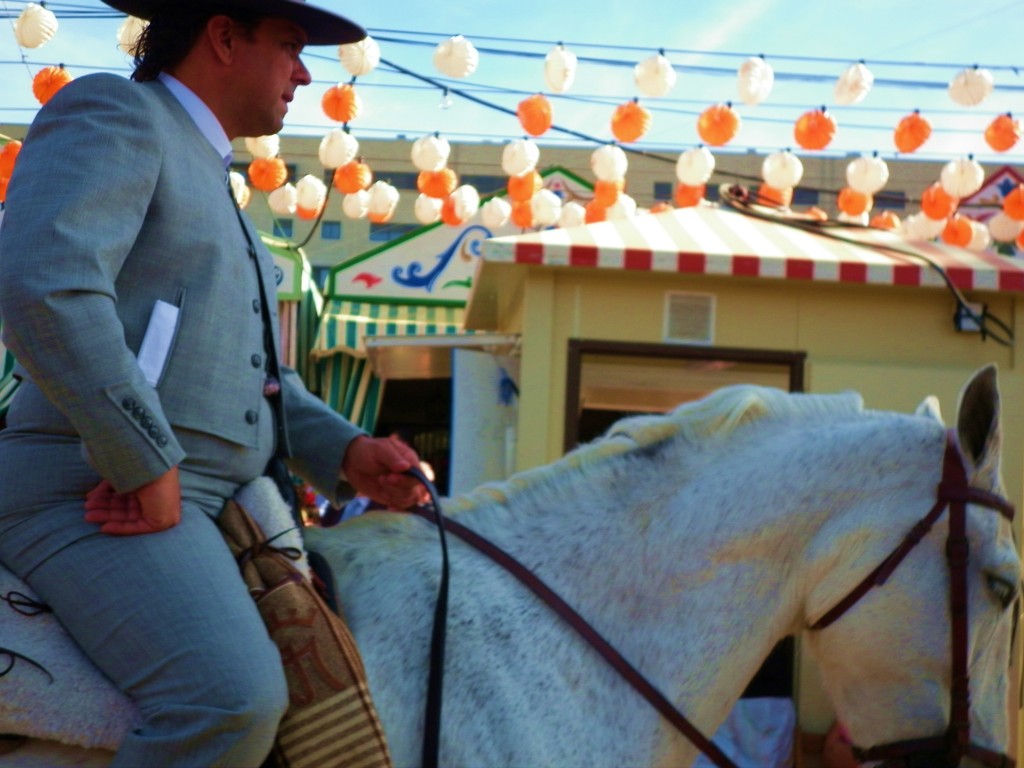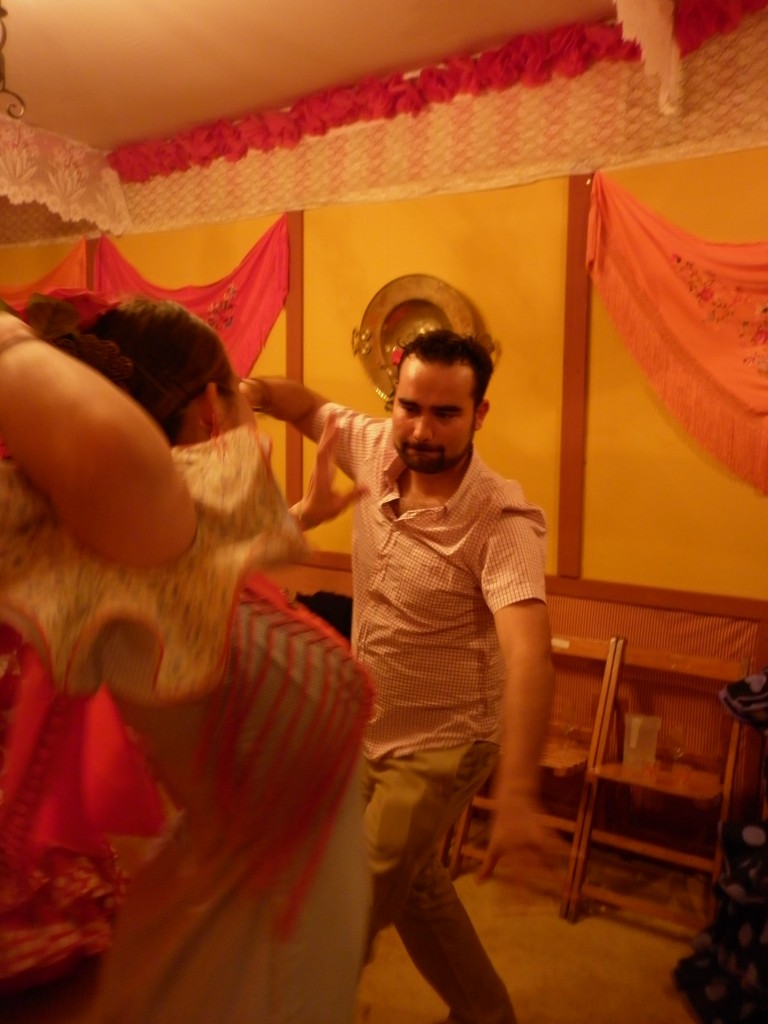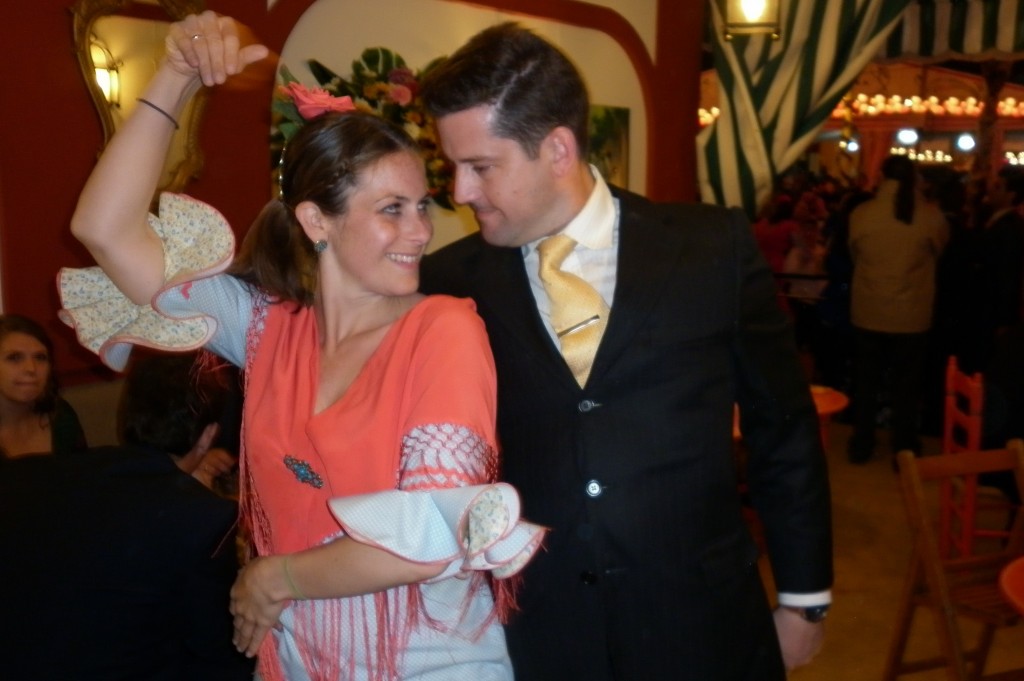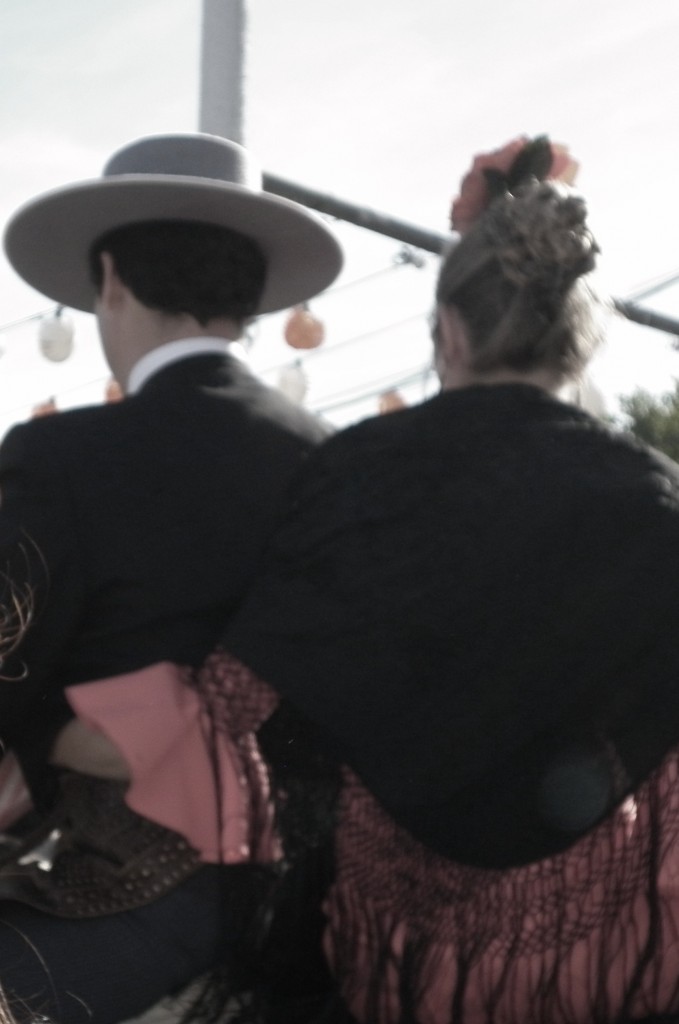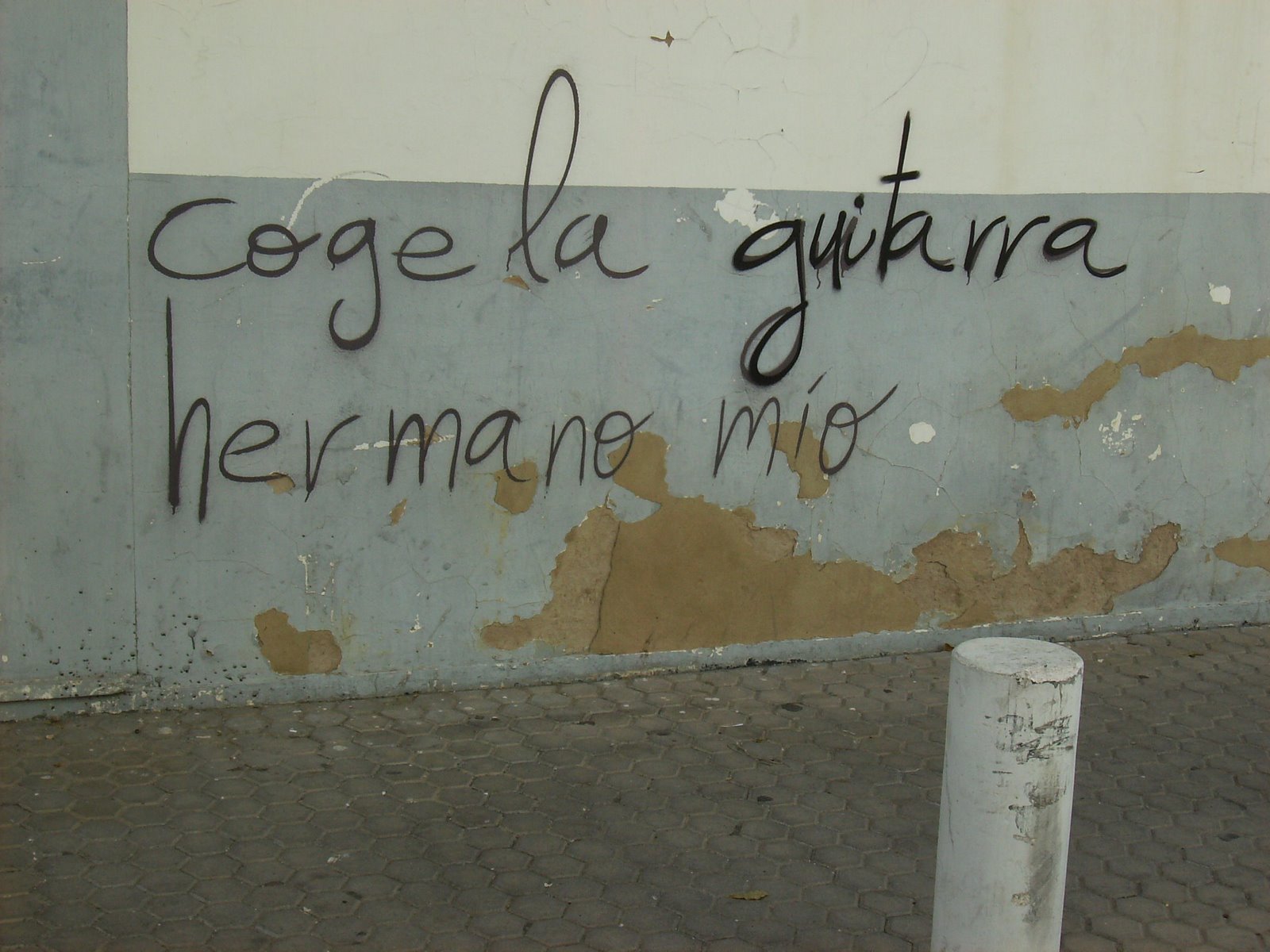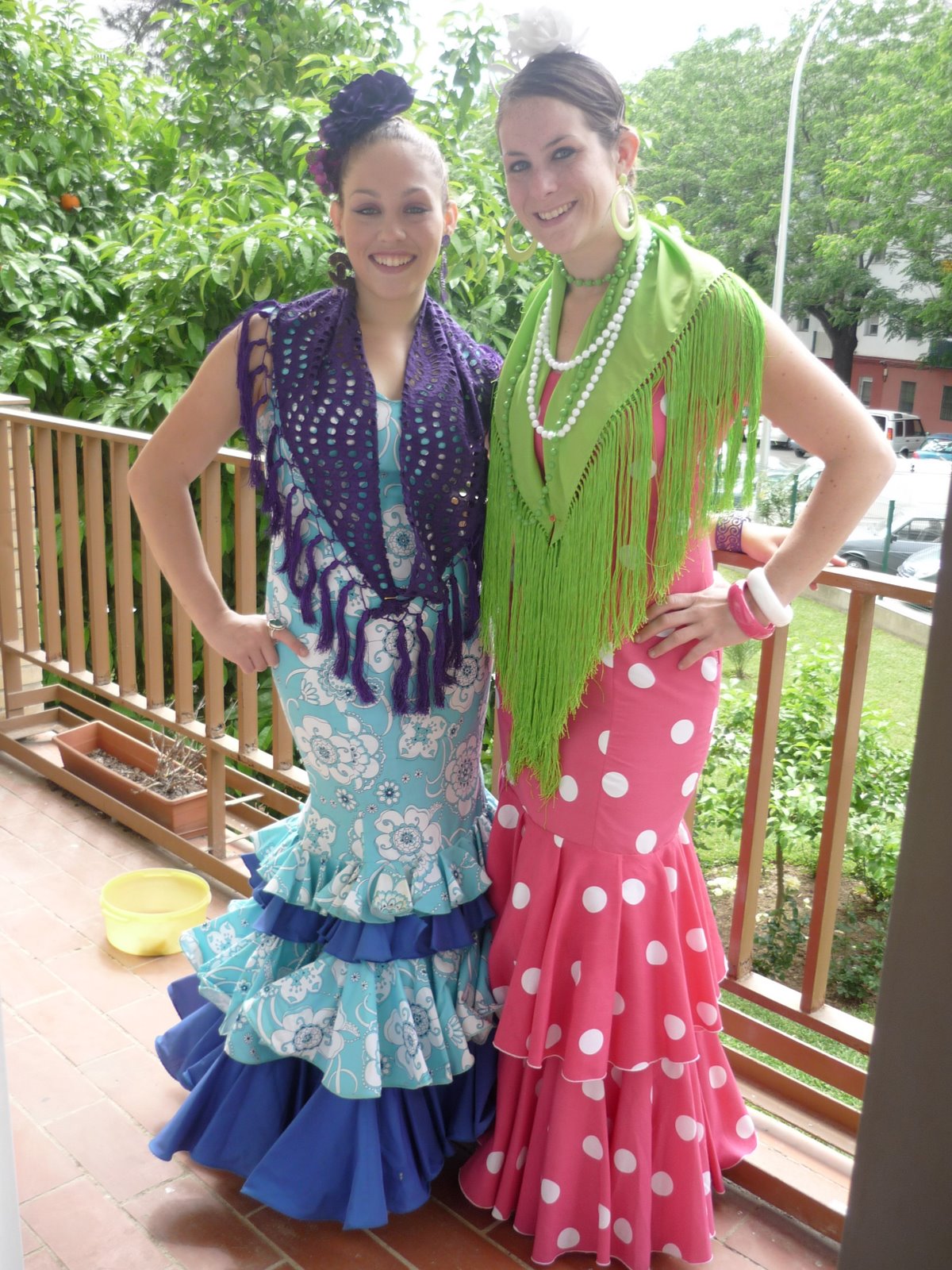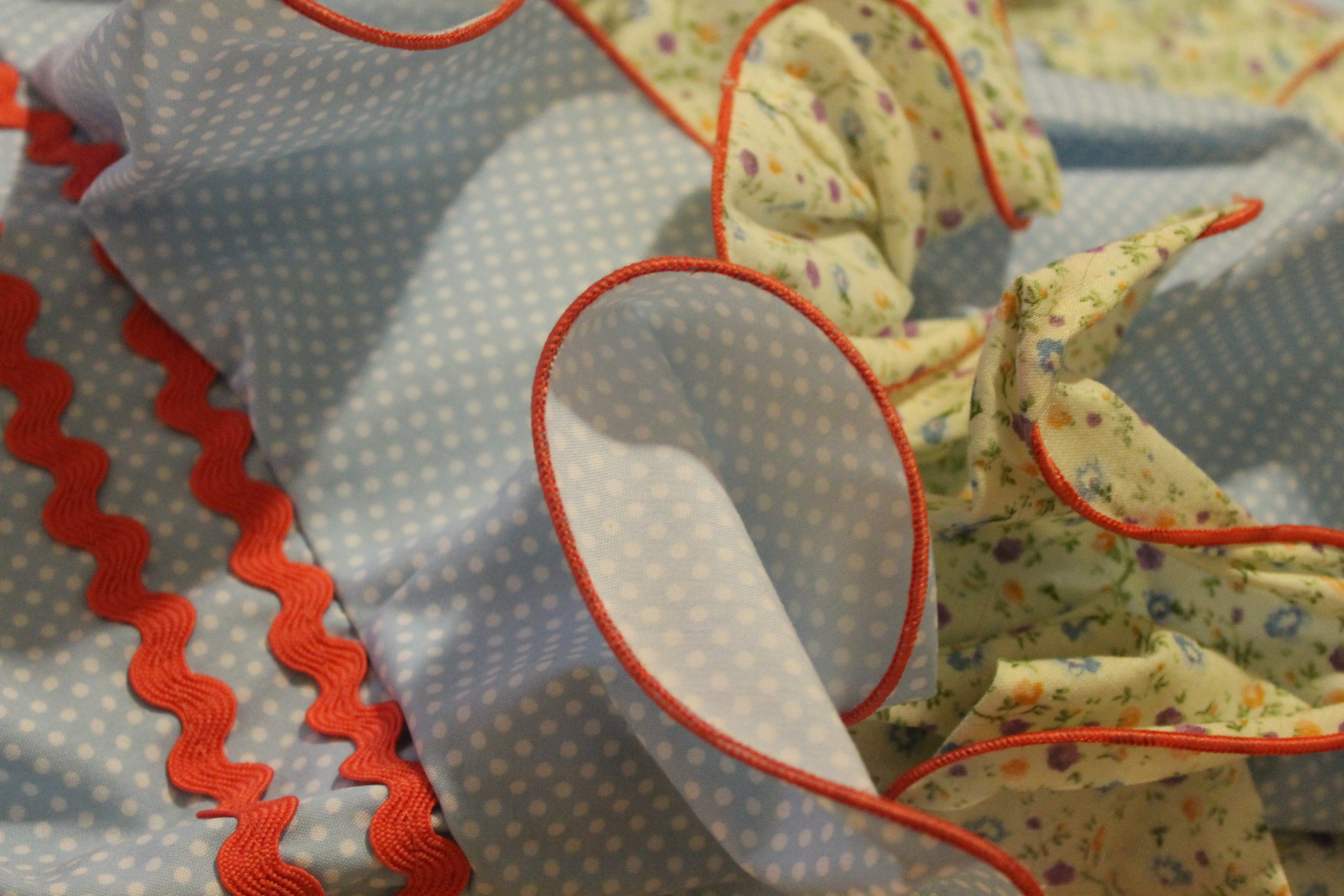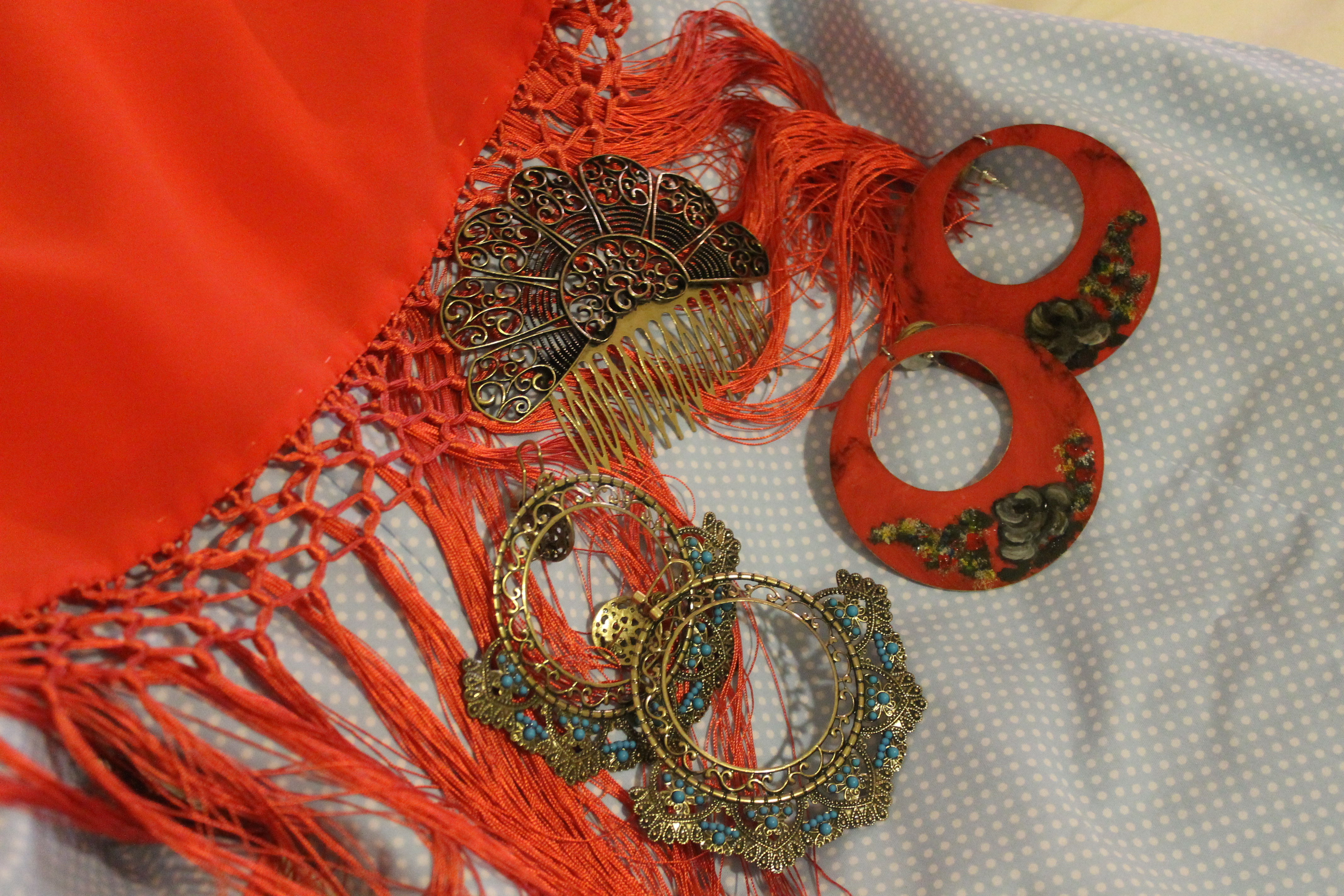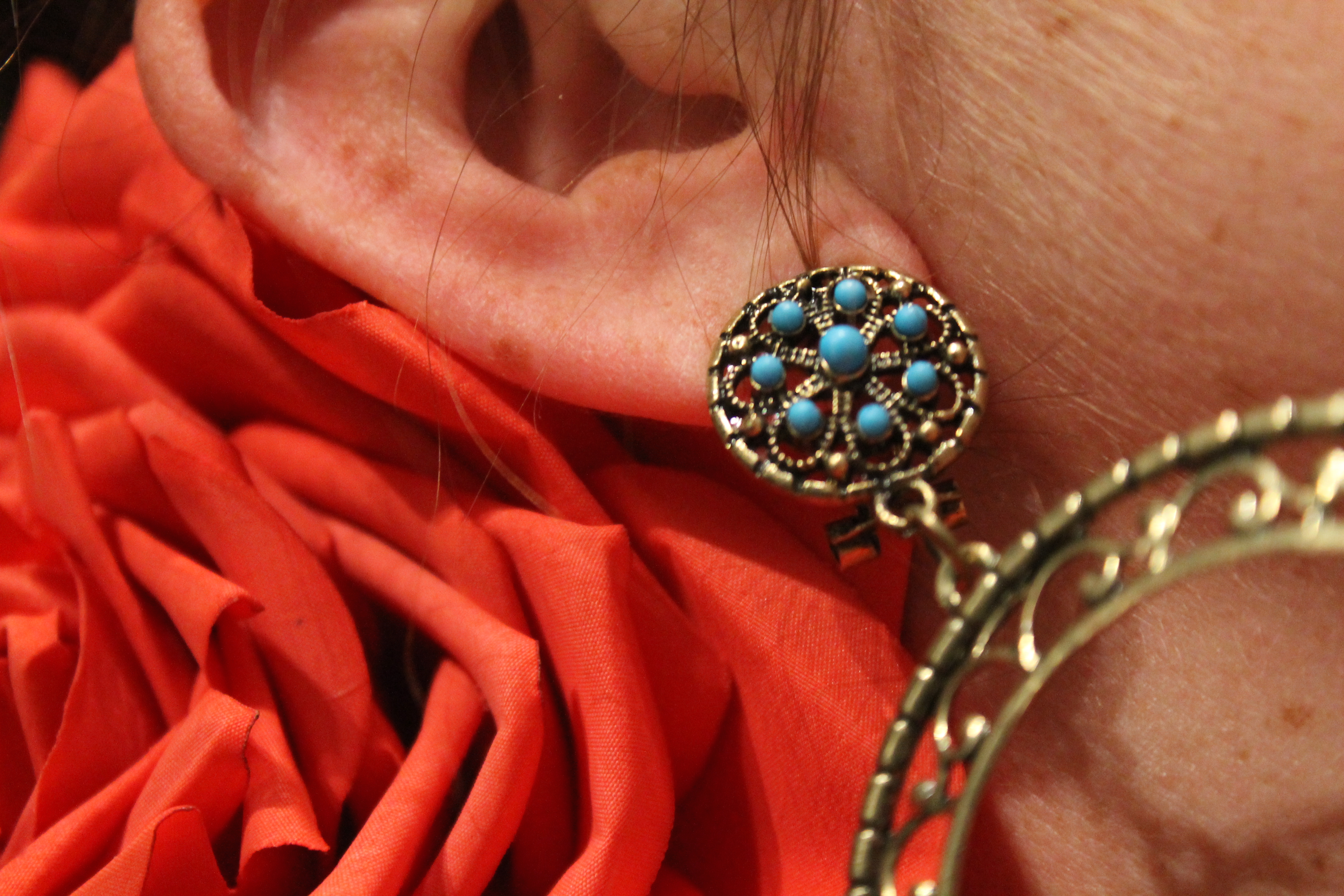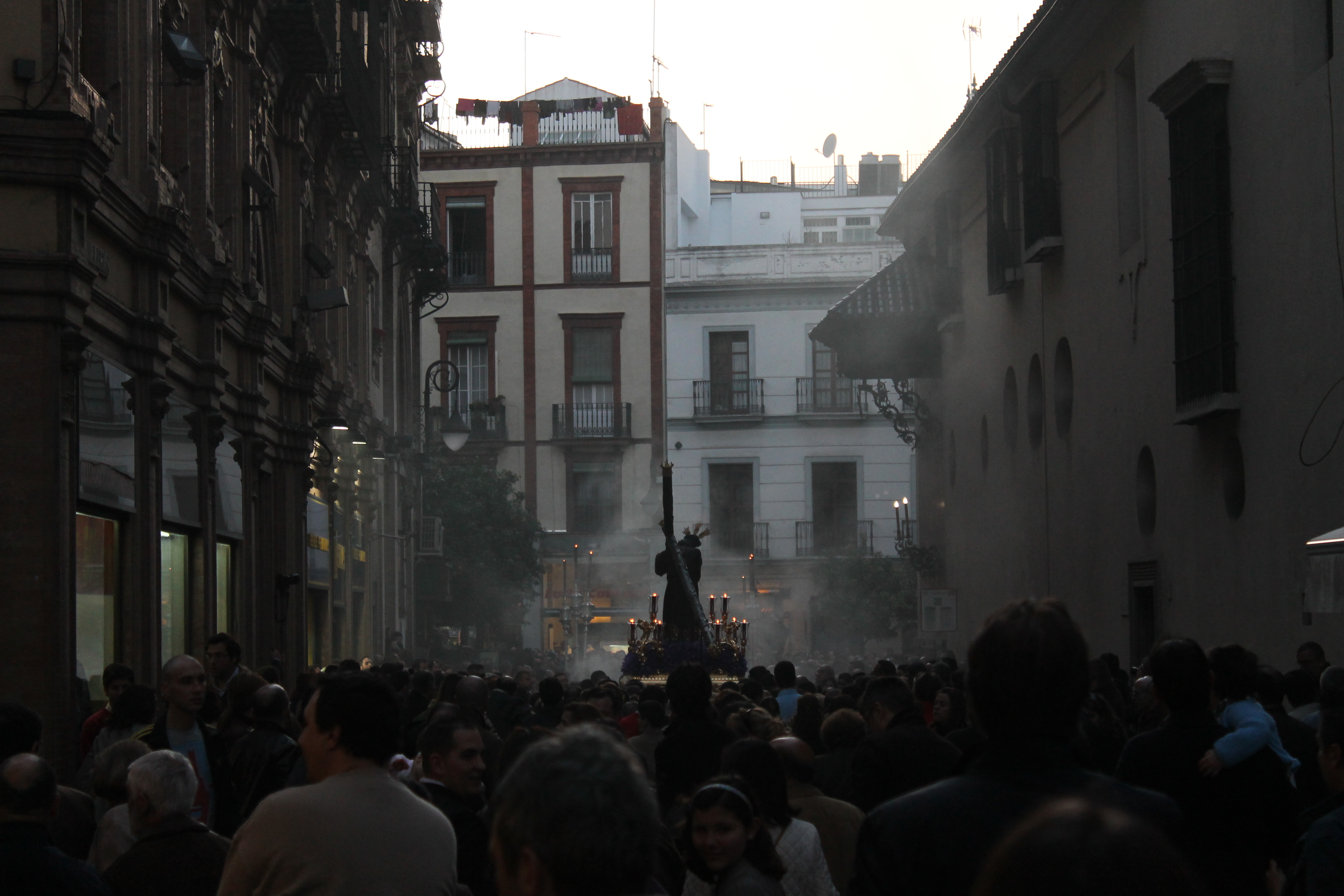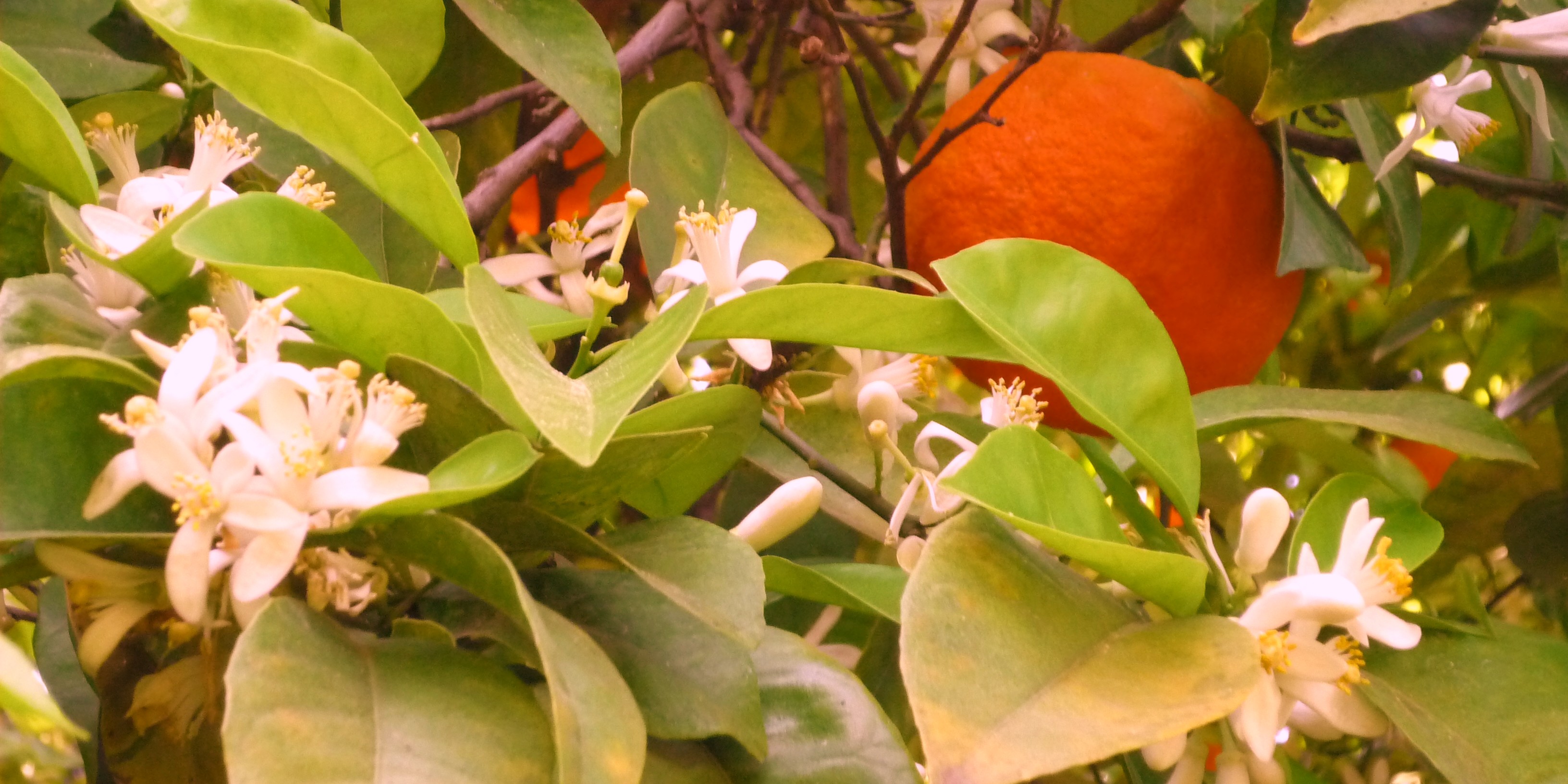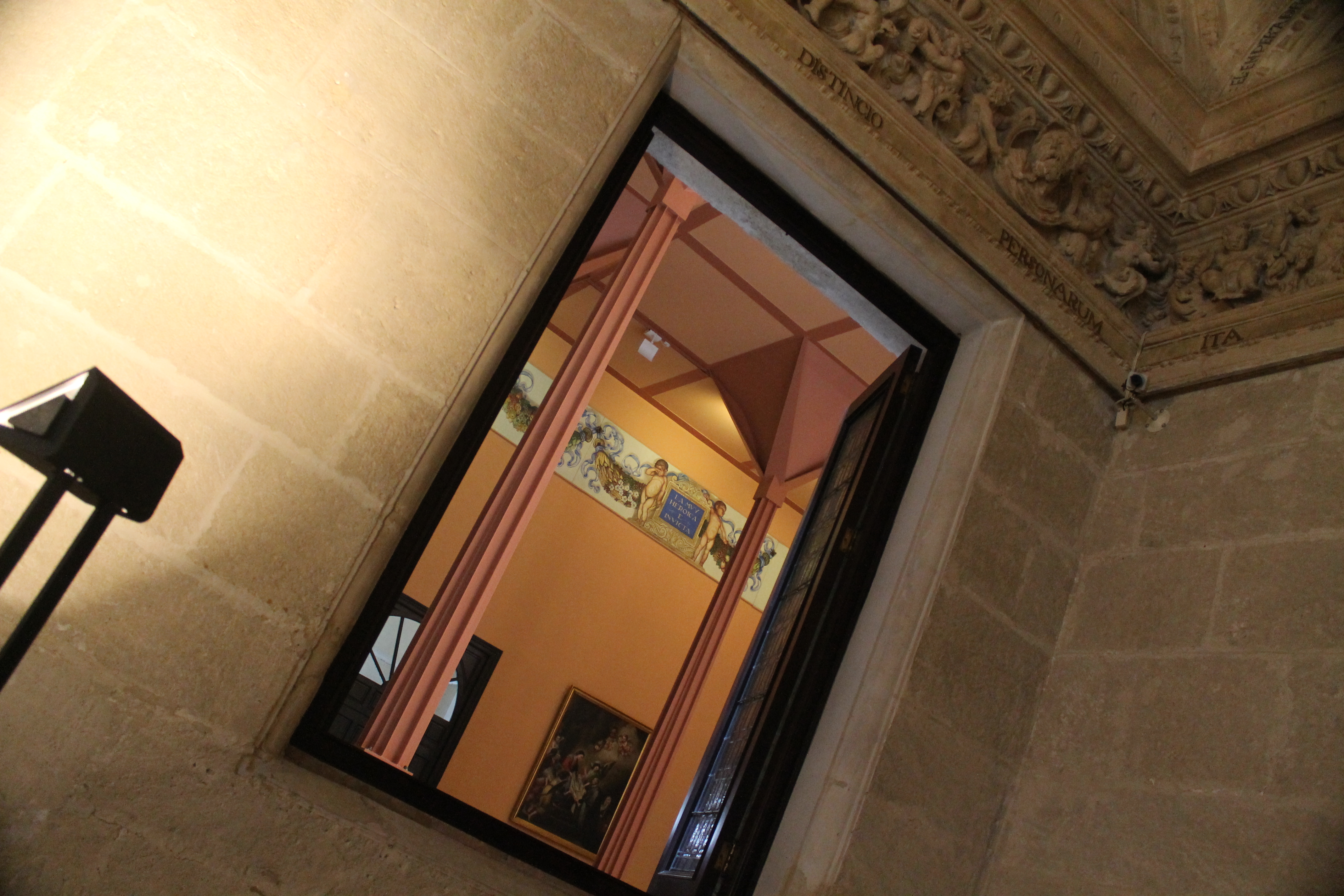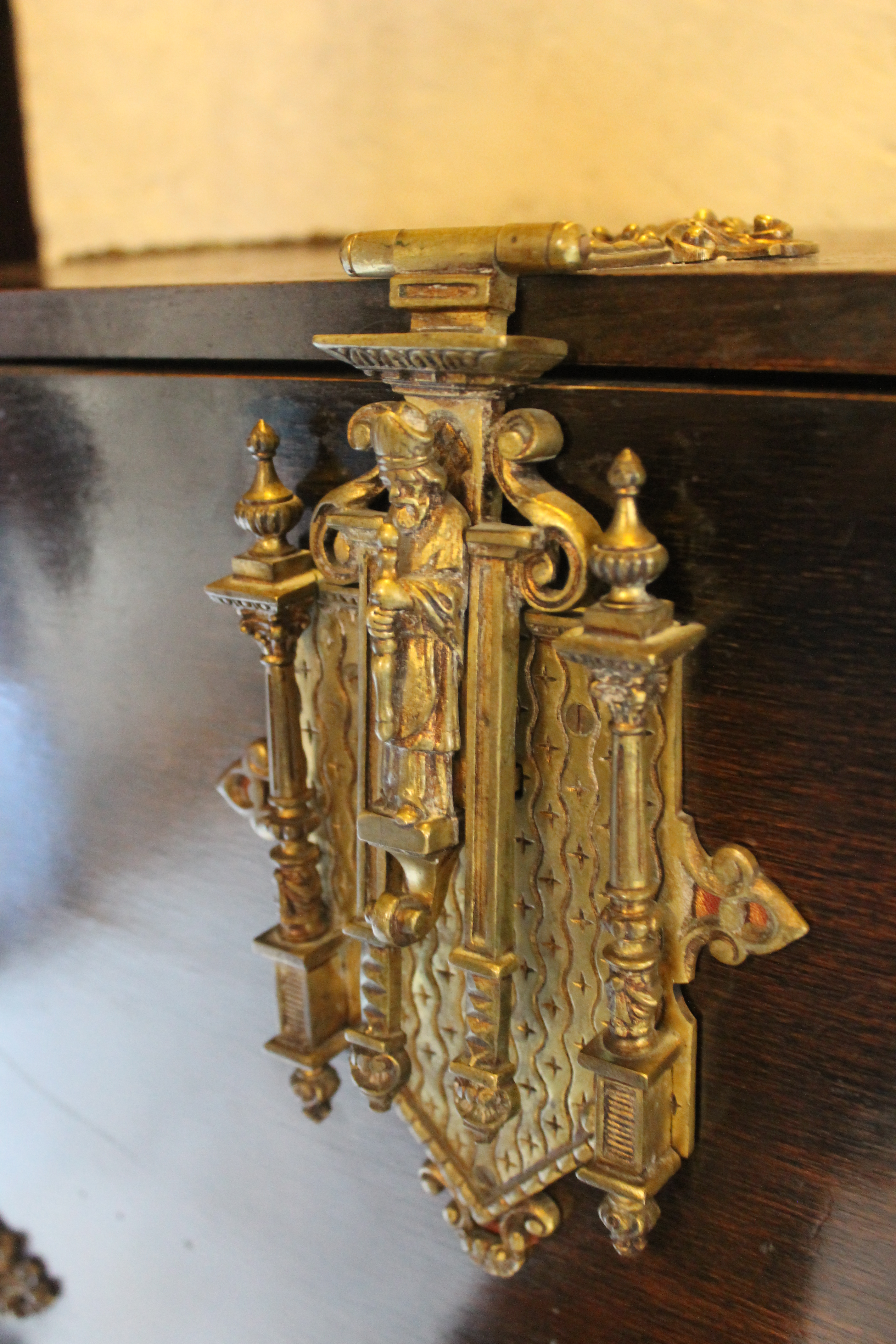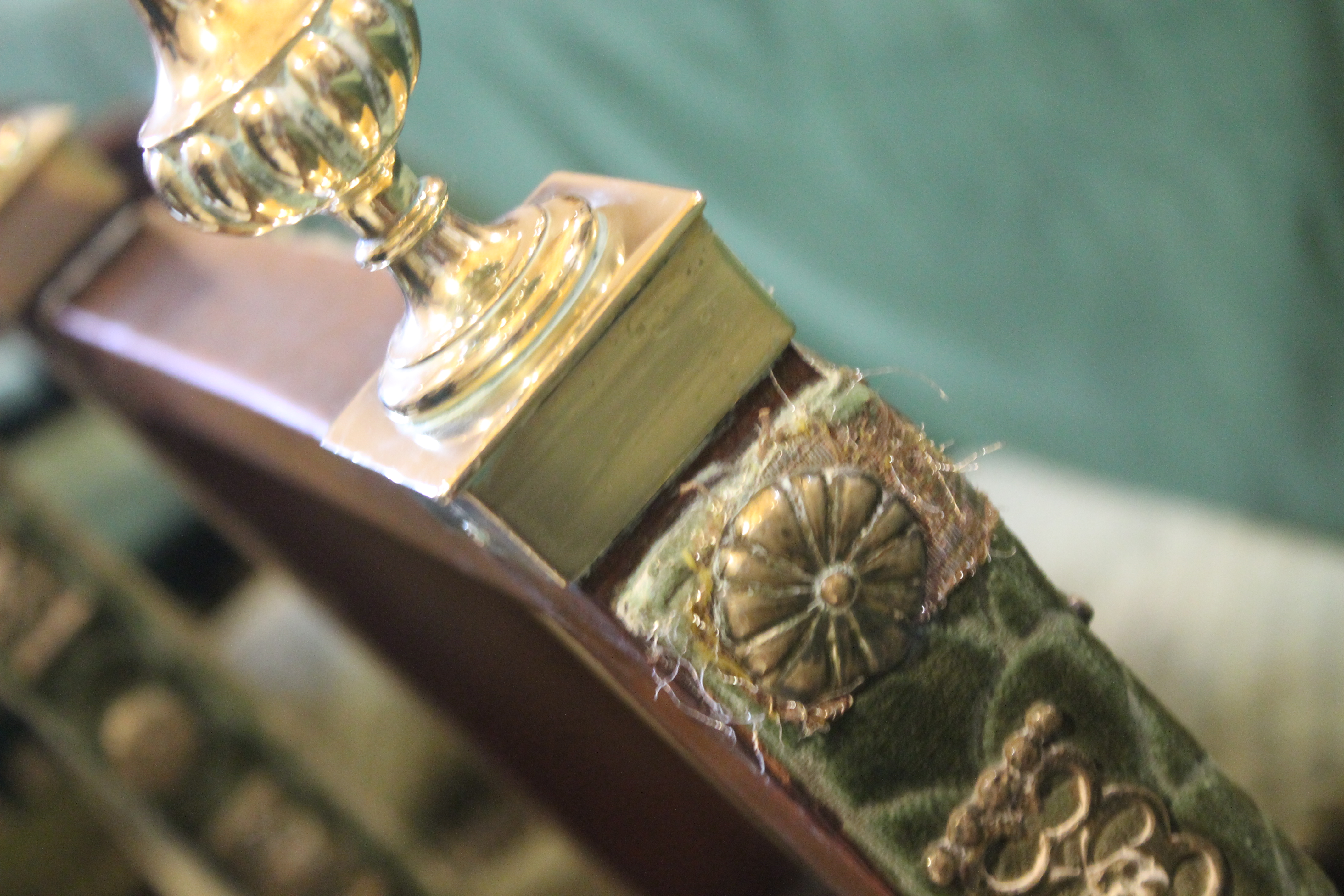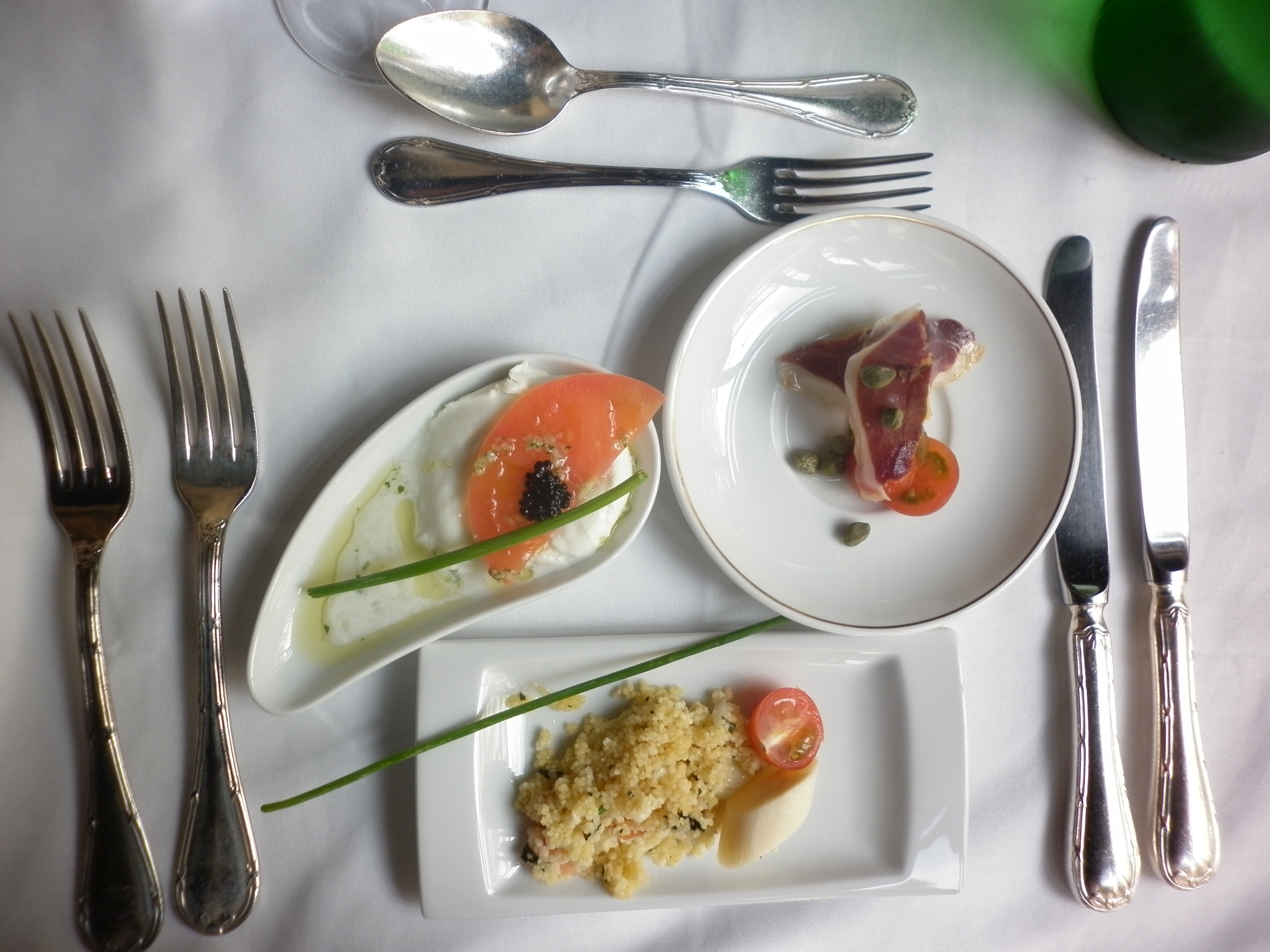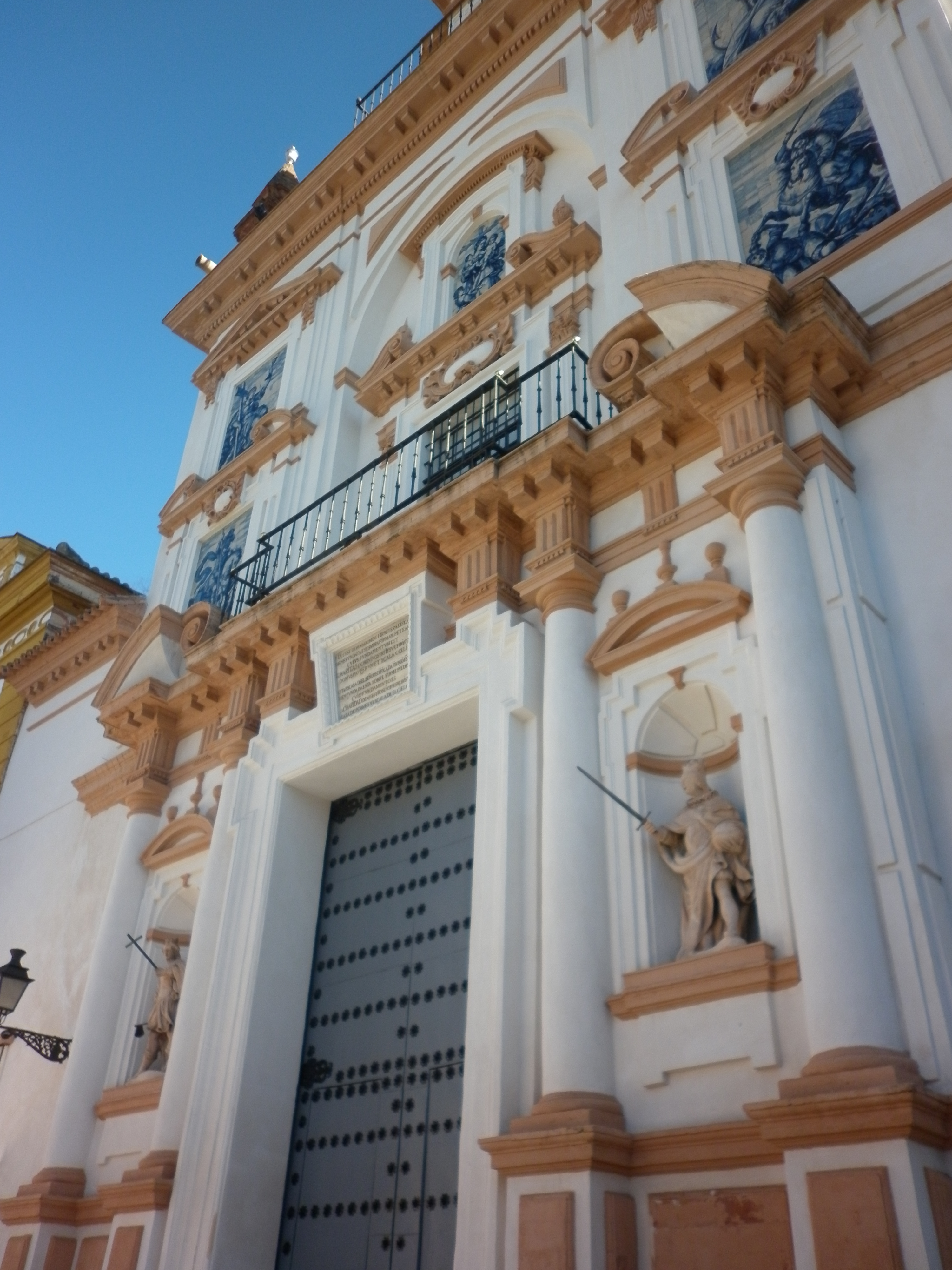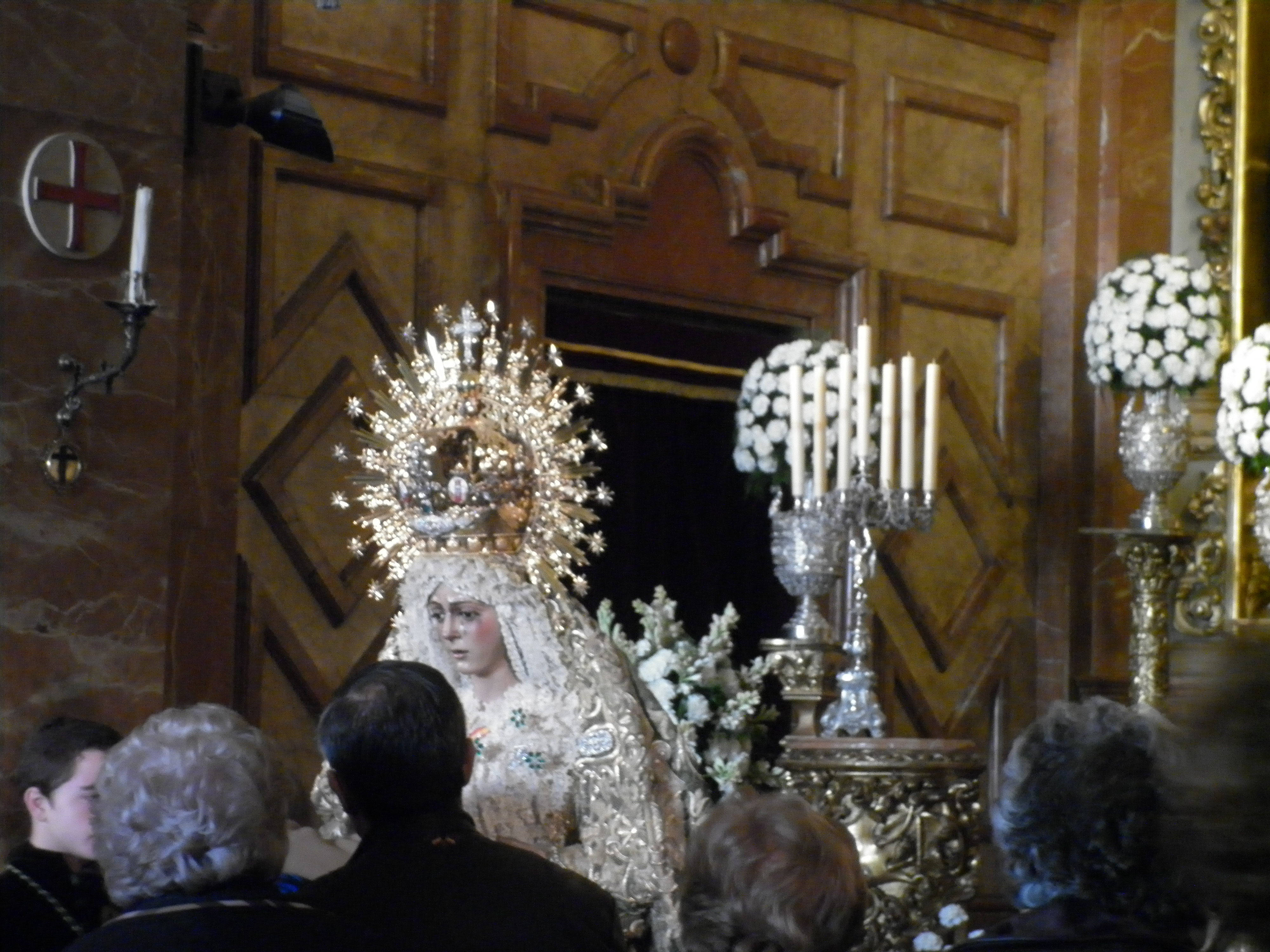I’ve written for Backpacking Matt and The Spain Scoop about my favorite fiesta of the year: the Feria de Sevilla. Curve-hugging dresses, horse carriages and thousands of bottles of manzanilla sherry characterize the fiesta más alegre of the South just weeks after the gold-laden pasos are stored in their temples.
While in my surrogate caseta, Los Sanotes, my friend Susana’s cousin came to look for me. Yanking my beer out of my hand, she introduced me to a 60-something couple who were standing, dumbfounded, against the wall of the temporary tent. Introducing myself, they fired a million questions at me (whereas I asked just one: Would you like anything to drink?) about the history of the Feria, what it costs to be a member of a caseta and how to best go about enjoying themselves. For as much as I know about Feria – pescaíto etiquette, the names of the streets and how much a jar of rebujito costs – Feria is all about viviéndola. Being with friends, having a buen rato while wearing an enormous flower on yourself and admiring the trajes de gitana are all just a part of the week at the Recinto Ferial.
If the Feria is all about living it up, I’m all lived out. Three rides in horse carriages, two broken shoes and having to wash my flamenco dress three times to get all of the dirt out must mean that this ferianta did more than her fair share of dancing sevillanas and capturing the essence of the fair in pictures. Below each picture is a line from a sevillanas song (a four-part flamenco lite that’s heard emanating from each of the 1000+ casetas) with a link to the song on youtube. As the popular sevillana, A bailar por Sevillanas says, Si Ud. no ha visto la Feria, se la voy a enseñar (If you’ve never seen the Feria, I’m going to show it to you):
Ya huele a Feria, y olé, ya huele a feria
Once the somber processions and palios-encased Virgins are safely back at their churches, the construction of the main gate, called La Portada, is nearing completion, dry cleaners are working overtime to press volantes (ruffles), and the talk of Feria is imminent. Ya huele a Feria, it smells like Feria, and ¡olé!
La Feria se ilumina con su belleza
While the carnival rides and casetas are open, the fair doesn’t officially begin until midnight on Monday, after the traditional pescaíto fried fish dinner. The mayor waits until precisely the right moment to flip the switch that lights up the main gate, called the portada, and the thousands of paper lanterns, farolillos, that illuminate the street. Almost immediately after this moment, called the alumbrado, the bands start up and everyone starts dancing. ¡Olé, esa feria!
Vámanos pa la Feria, cariño mío
I’ve worked out a math equation: the less days that remain until the alumbrado, the more antsy I am. This year, as in years past, we’ve gone to have a few drinks before dinner on Sunday and enjoy the fairgrounds without people or horse carriages. The Calle del Infierno, with its circus tents and carnival rides, is the only really lively part, which means we get special treatment in the caseta. This year, I decided to skip out on the alumbrado and get a good night sleep, only to be restless and not fall asleep until 3am. I wanted to shake Kike awake and say, ¡Vámanos a la Feria, cariño mío!
Debajo de la portada, se la voy a enseñar
Imagine this: a maze of more than 20 streets, all named after bullfighters, more than 1000 red-and-white-and-green-striped tents, and a mess of people wearing brightly colored dresses. Add in all of those pesky horse carriages that clog the streets until 8pm, and there’s simply just one place to meet: under the main gate. There’s a whole lot of public casetas clumped nearby (PSOE, Garbanzo Negro, San Gonzalo), so this is a good place to begin your afternoon if you’re waiting to meet friends.
Me gusta el mosto en noviembre, y mirar al cielo azul
Feria is about as propio to Seville as the Taste of Chicago might be to my native Chicago. It’s a whole big gathering of people admiring beautiful Andalusian women, Jerezano stallions and drinking local wine. One of my favorite sevillanas is Los Amigos de Gines’s Yo Soy del Sur, I’m from the south, which pays homage to all of the best things about Andalucía – the bullfights, the crops, the never-ending blue sky, the pilgrimages. I get chills listening to its slow compás, these are my customs, and I never want to lose them. Ojalá…
Se enamoró mi caballo de una yegua de Castilla
If I could bring two people to vivir la Feria, I’d have my dad chugging beers with Kike by night and my mom riding in Leonor’s horse carriage by day. From the early morning hours until the last call of 8pm, the streets jingle with cascabeles as hundreds of horse carriages parade around the Real. It’s not cheap – the little licence plate needed for circulating on the streets costs 86€ an hour!! I love living the feria by day to admire the stately Andalusian stallions which carry manzanilla-wielding men and gorgeous gitanas on their backs, and am lucky enough to have friends who bring carriages! Now if only I’d spot the Duquesa de Alba!
Me gustan los toros serios y los toreros con arte
Apart from the horses, the toros de lidia bravely stare down toreros six times a day during the week’s corridas. Nothing says Feria like a stroll around the fair in the morning, mantilla firmly on your head, with an afternoon at the Maestranza. From this point in the year, the Sunday afternoon bullfights officially start. While I’ve been just once to a bullfight in Seville, we do get to enjoy a mini session at my school: the preschoolers dress up as the toros and bullfighters, and we all chant, ¡Torero, torero! as the jury decides to award the valiant baby bullfighters with an oreja or two. Arte, pero arte.
Me metí en una caseta que estaba llena de pijos, todo el mundo en traje y hablando de su cortijo
As I’ve talked about the casetas before, it’s important to note that they’re private and guarded by door guys. I once invited my friend Lindsay to Susana’s, and she told the portero that she was friends with the guiri inside. He shook his head and said, no foreigners here! Most of the tents are owned by businesses, political organizations, the armed forces and big groups of friends, but there’s no denying it – most of the people who own the tents are rich enough to pay for them. It’s not cheap – Kike and I pay 75€ for the year, but we’re just two of the hundreds of socios . Whenever I am invited to a new caseta, I like to take in the ambience of the people who are talking about their horses, wearing nice suits, and have obviously come from money. I’ve been to some of the bigger and nicer tents in Feria, but prefer the less pretentious ones (and this hilarious sevillana – I went in to a tent full of preppy people, everyone wearing a suit and talking about their horse farm).
Mírala cara a cara, que es la primera
Once night falls and all of the socios have had dinner, the flamenquito bands arrive for live music and two lines of dancers form to dance sevillanas. This four-part dance is like a coqueteous encounter between two lovers: each step, they seem to get closer and more sensual. You can dance with up to four people, either boy-girl or girl-girl (but who care if you dance boy-boy!) and the music doesn’t stop until 5am. My favorite memories have been dancing – with friends, with socios, with my partner, with my students – and each year I feel more confident in my dancing. In Los Sanotes, I’m often invited to dance, and I swear it’s the least American I feel during the entire year.
Esa gita, esa gitana, se conquista bailando por sevillanas
When Susana first took me to try on my very first flamenco dress, I knew not to expect anything else but a lot of drinking and feeling very awkward in my tight dress. I was a hot gitana mess, but each year I feel just a bit more flamenca and love that the Novio has some amazing moves when it comes to dancing sevillanas (even if I have to drag him onto the dancefloor!).
Pasa la vida, pasa la vida y no has notado que no has vivido
Before you know it, the tents are coming down and the fairground is vacant. Seven days pass by in a blur of sherry and polka dots, but some of my most treasured times in Seville have been had at the fairgrounds. The famous sevillana Pasa la Vida by Albahaca talks about how life moves by so quickly and often we forget to live it, but the opposite happens to me during Feria. I can sleep four hours a night and stand dancing for 14. I feel sexier shaking my culo in my dress. I feel confident in calling everyone I know and finding them somewhere in the Real to have a drink.
When it’s all over and life goes back to normal, some little spark inside me seems to kind of flicker out, like my Amigos de Gines sing in my absolute favorite, Algo se muere en el alma. I’ve got to wait 51 excruciating long week to pin the flower back atop my head and my espartos to my feet. Something, indeed, does die in your soul.
Ever been to the Feria de Sevilla? Any good stories to share? Celebrity sightings?
